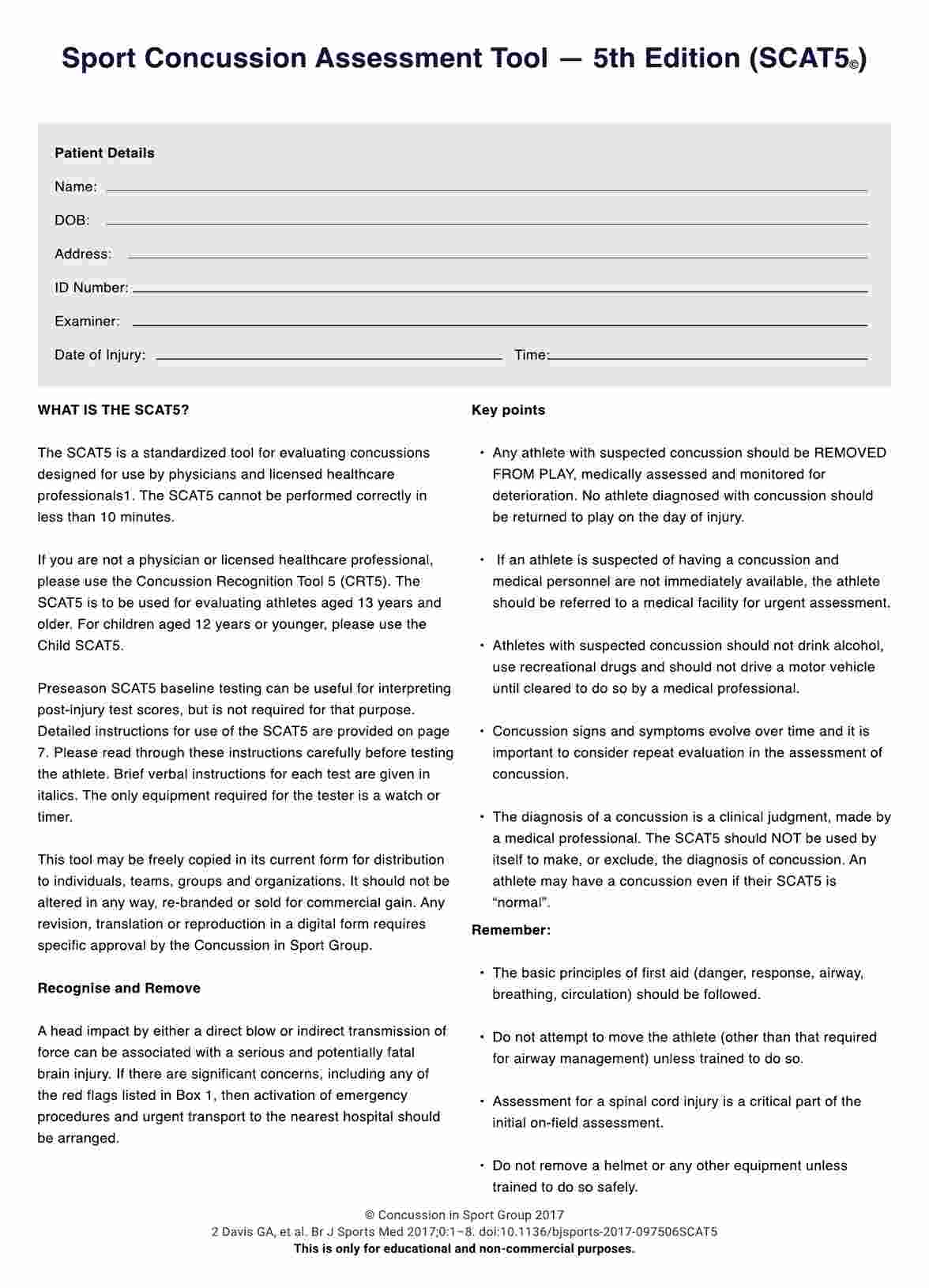The SCAT5 form is a tool for assessing concussions, but it should not be used as the sole means for diagnosis. It aids in evaluating symptoms and cognitive function, but a comprehensive clinical assessment by a healthcare professional is necessary for an accurate diagnosis.

Sport Concussion Assessment Tool - 5th Edition (SCAT5)
Use the fifth edition of the Sport Concussion Assessment Tool (SCAT5) to assess your athletes for potential concussions if they ever get into accidents in and outside their sport.
Sport Concussion Assessment Tool - 5th Edition (SCAT5) Template
Commonly asked questions
Completing the SCAT5 typically takes about 20 to 30 minutes. The duration can vary depending on the individual's responses and the thoroughness of the assessment conducted by the healthcare professional.
The SCAT5 should be used immediately after a suspected concussion and during follow-up appointments to monitor recovery. It can also be used for baseline testing before the sports season begins and periodically throughout the season if needed.
EHR and practice management software
Get started for free
*No credit card required
Free
$0/usd
Unlimited clients
Telehealth
1GB of storage
Client portal text
Automated billing and online payments











